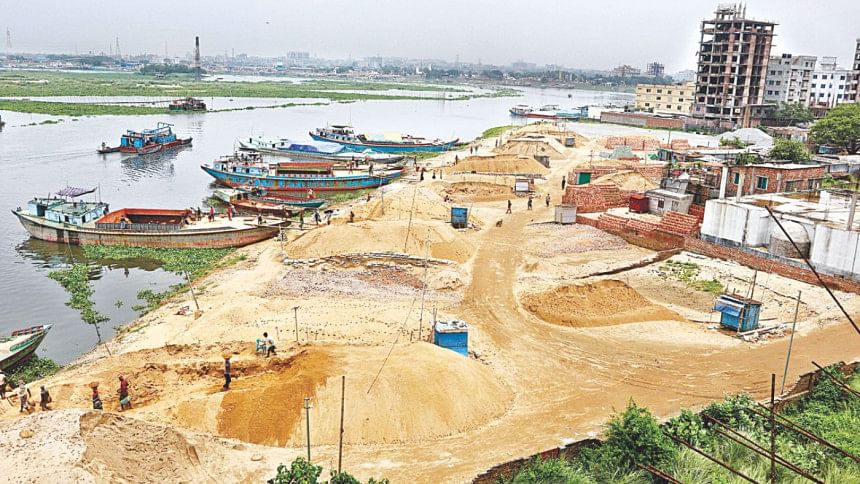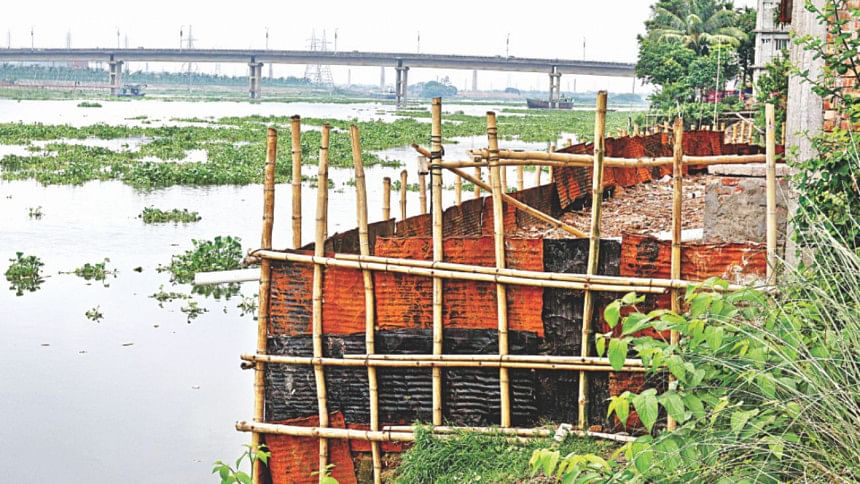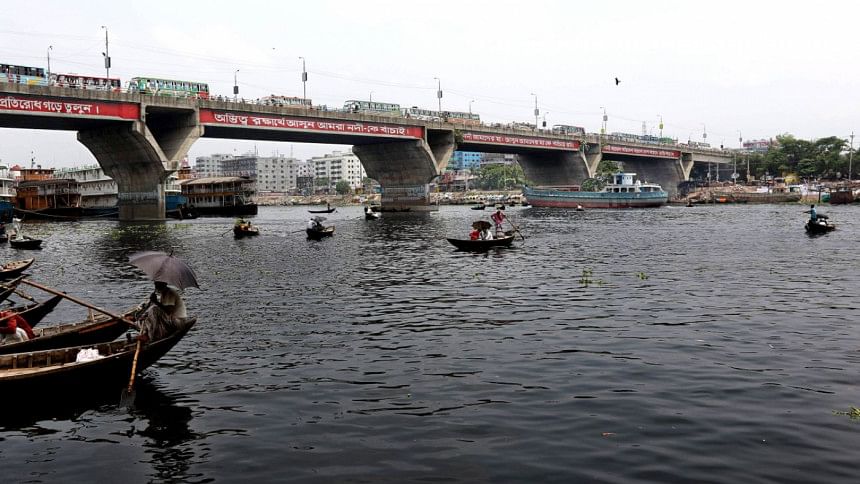4 Dhaka Rivers: Little care to keep them alive

Blessed with a 110km waterway network of four rivers, Dhaka could have been one of the world's best cities with rich environmental and ecological diversity and great sources of drinking water.
The reality, however, is simply the opposite as the rivers are dying a slow death due to years of encroachment and pollution, improper demarcation and inadequate dredging.
Faulty demarcation of the rivers by their custodians, including two district administrations, the inland water transport authority and the environment department, has only sped up the process of their destruction.
Also, canals had been a significant part of the city's landscape once. Even in the 1970s and 80s, over 50 canals weaved the city's river network together.
Today, more than half of them simply vanished and in their place now stand buildings and other structures.
Some 26 still survive, but they are in their death throes because of continued grabbing, obstruction and dumping of industrial and household wastes.
And with the city's precious sweet water bodies in a deplorable state, the government has embarked on fetching drinking water to the capital from far away rivers -- the Padma and the Meghna.
At many points, the waters of the four Dhaka rivers have become so polluted that they are untreatable.
The Daily Star has been doggedly reporting on the deliberate destruction of the rivers since 2002 and launched a campaign called Save River, Save Dhaka in 2009.
In the last eight years since 2009, parliament and the judiciary took a number of initiatives to protect the capital's lifelines -- the Buriganga, the Turag, the Balu and the Shitalakkhya.
But the measures proved too little too late. The destruction of the Turag and the Balu has reached such a level that they may soon become things of the past.
Visiting the rivers at regular intervals, this paper has found, and reported, that the encroachment could go on unabated due to lax surveillance by their custodians.
Early last month, this correspondent saw encroachments choking the water flow of the Balu, the Shitalakkhya and the Turag at multiple points.
The Buriganga has around 100 encroachment and pollution points, officials said.
While the Balu is in its deathbed in Rupganj and Beraid areas, the Shitalakkhya is dying in Rupganj along Daktarkhali road and the Buriganga in Shyampur and Aminbazar areas.

Grabbing of the Turag became rampant after the authorities set up faulty demarcation lines in Tongi, Kamarpara, Dhour, Birulia and Mirpur areas.
A 2009 judgment of the High Court detailed the ways to reclaim the rivers from grabbers and save them from pollution.
The court ordered the deputy commissioners of Dhaka, Narayanganj, Gazipur and Munshiganj to demarcate the boundaries of the Buriganga, Shitalakkhya, Turag, Balu and Dhaleswari rivers as per CS and RS records and retain the eroded and reformed land as part of the rivers.
Following the verdict, demarcation pillars were set up along the waterline of the lean flow of the dry season, excluding around 2,500 acres of river foreshore and adjoining wetlands.
This encouraged many new land grabbers to occupy the excluded river areas by filling the water bodies with earth.
Around a third of the 6,000 boundary pillars have been placed at wrong spots along the four rivers, the national taskforce on saving rivers said in October last year.
An official of the Bangladesh Inland Water Transport Authority (BIWTA), the primary custodian of the rivers, recently said the Balu river was not under surveillance and no effort was made to recover the foreshore of the Shitalakkhya.
According to an official estimate of the Narayanganj river port, the Shitalakkhya lost 1,860 acres, including 595 acres of its foreshore, due to faulty demarcation.
Ataharul Islam, chairman of the National River Protection Commission, blamed the faulty demarcation on drawing the lines of river banks without following the Cadastral Survey (CS) and Revised Survey (RS) records.
The authorities never properly protected the river foreshore despite the High Court order, he said.
“As a result, everyone set out demarcation lines randomly to their advantage to facilitate river grabbing. For example, demarcation pillars were set up along the Turag excluding its extensive foreshore.”
In line with the HC order, the River Protection Commission proposed demarcating the four Dhaka rivers as per the CS and RS records and their actual length and width, Ataharul added.
He said demarcation of Dhaka rivers would be done afresh.
Last year, the National Taskforce on River Conservation also decided to conduct a fresh survey using the Global Positioning System to draw the foreshore lines as per the CS map.

A committee, led by the additional deputy commissioner for revenue of Gazipur, was formed to conduct a fresh demarcation of the Turag and the Balu, Ataharul said.
Seeking anonymity, a BIWTA official at the Dhaka river port said the fresh survey for demarcation of the 86km river route of the Buriganga, the Turag and the Balu began in February.
Around 80 percent of the work has been completed so far, he said.
But the Dhaleswari has been kept out of demarcation process although it is part of Dhaka's circular waterway, another BIWTA official said.

 For all latest news, follow The Daily Star's Google News channel.
For all latest news, follow The Daily Star's Google News channel. 






Comments